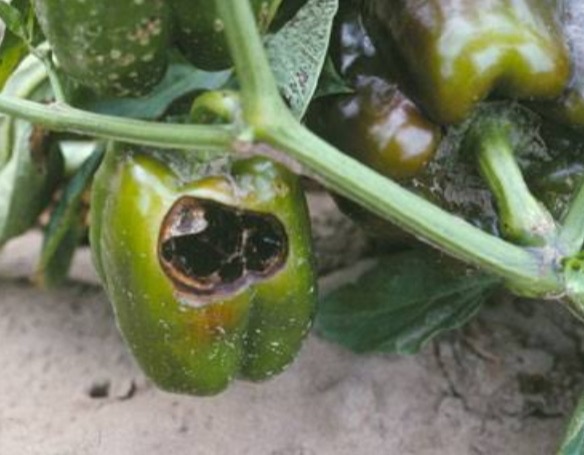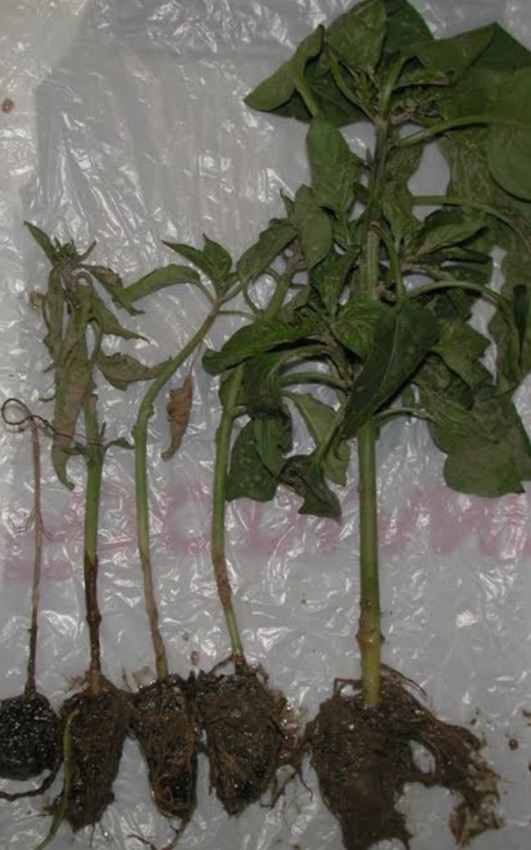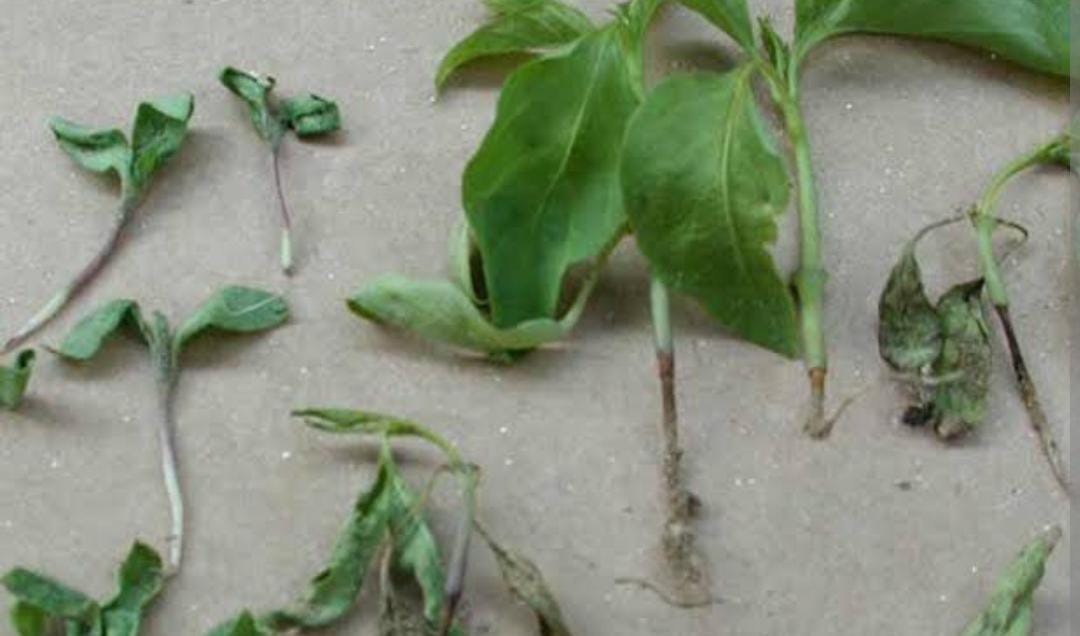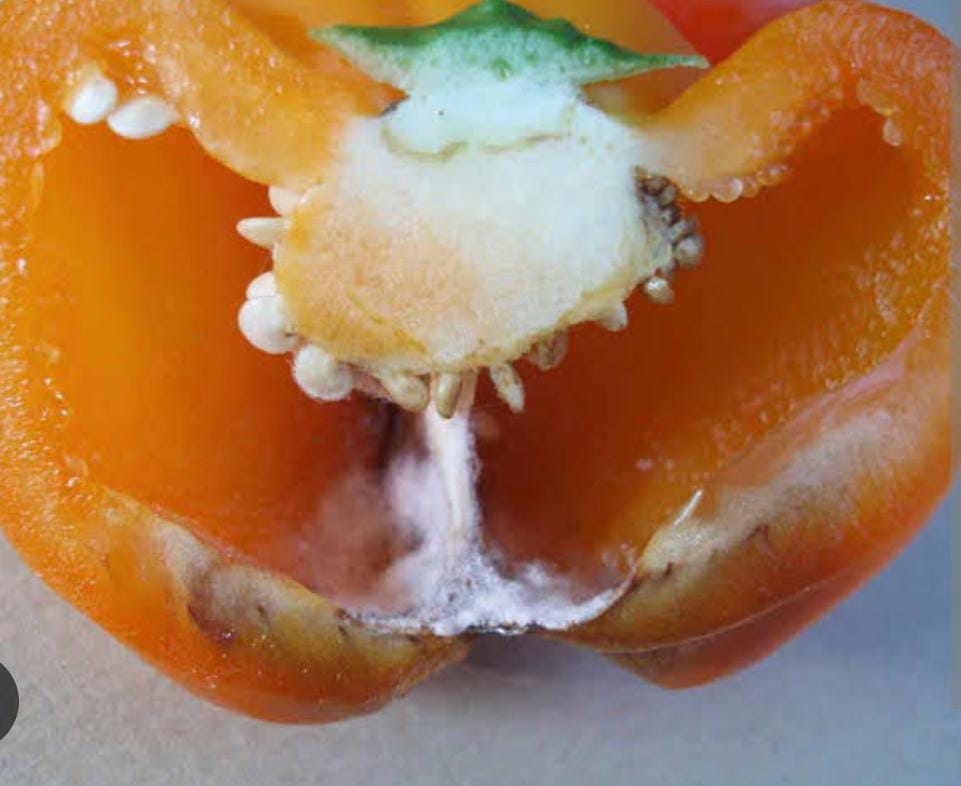Bell Pepper
Bell peppers are annuals, 18-36 inches tall, and frost-sensitive. They prefer well-drained, sandy-loam soil in full sun. Keep the soil moist. Edible but not medicinal.

Habit
Annual
Height
0.5-1 m
Growth
Moderate
Soil
Well-drained loamy soil
Shade
Full Sun
Moisture
Moist
Edible
Yes
Medicinal
No
Origin
Central America
Climatic Condition
Tropical to Subtropical
Temperature (°)
20-30°C
Humidity (%)
60-70%
Potting media
Garden soil
Fertilizers
Balanced fertilizer
Watering
Regular watering; keep soil moist but not waterlogged
Plant Weight
0.5-1 kg
Flowering Time
Summer
Soil Ph level
6.0 - 6.8
Water Ph level
6.0 - 7.0
Soil EC
0.3 - 0.6
Yield Per Plant
2-4 kg of pepper (in soil)
NPK ratio
5:10:1
life Span
Annual
Health Benefits
Rich in vitamins A and C; supports immune health.
Suggested Grow Media or Potting Mix ?
50% loamy soil, 30% compost, 20% sand
Suggested Fertigation/Fertilizers
Fertilize every 2-3 weeks with a balanced fertilizer.
Common Diseases and Remedies
Damping off , fruit rot
Attacks the young plants , root system are destroyed by fungi , black water soaked lesions may develop around the calyx
Maintaining optimal growing conditions for young plants
HEALTH BENEFITS
· Rich in vitamin C and A, supporting immune and eye health
· Contains antioxidants like beta-carotene
· Supports heart health and reduces inflammation
What Is Bell Pepper
The bell pepper plant, also known as Capsicum annuum, is a type of pepper plant that produces large, bell-shaped fruits that are typically green, yellow, orange, or red when ripe. Bell peppers are a popular vegetable in many cuisines due to their mild, sweet flavor and crisp texture. They can be eaten raw or cooked and are commonly used in salads, stir-fries, and stuffed pepper dishes. Bell pepper plants are relatively easy to grow and are a popular choice for home gardeners due to their attractive appearance and versatility in the kitchen.
What Are The Different Types Of Bell Pepper ?
1. Green Bell Peppers:
Green bell peppers are the most common type and are harvested before they ripen fully. They have a slightly bitter flavor compared to ripe peppers.
2. Red Bell Peppers:
Red bell peppers are fully ripe green peppers and have a sweeter, more robust flavor. They are often used in cooking for their color and sweetness.
3. Yellow Bell Peppers:
Yellow bell peppers are ripe green peppers that have turned yellow. They have a sweet flavor and are often used in salads and other dishes for their vibrant color.
4. Orange Bell Peppers:
Orange bell peppers are similar to yellow peppers but have a slightly different flavor and a more vibrant orange color.
5. Purple Bell Peppers:
Purple bell peppers are a less common variety that have a deep purple color. They are similar in flavor to green bell peppers but have a more striking appearance.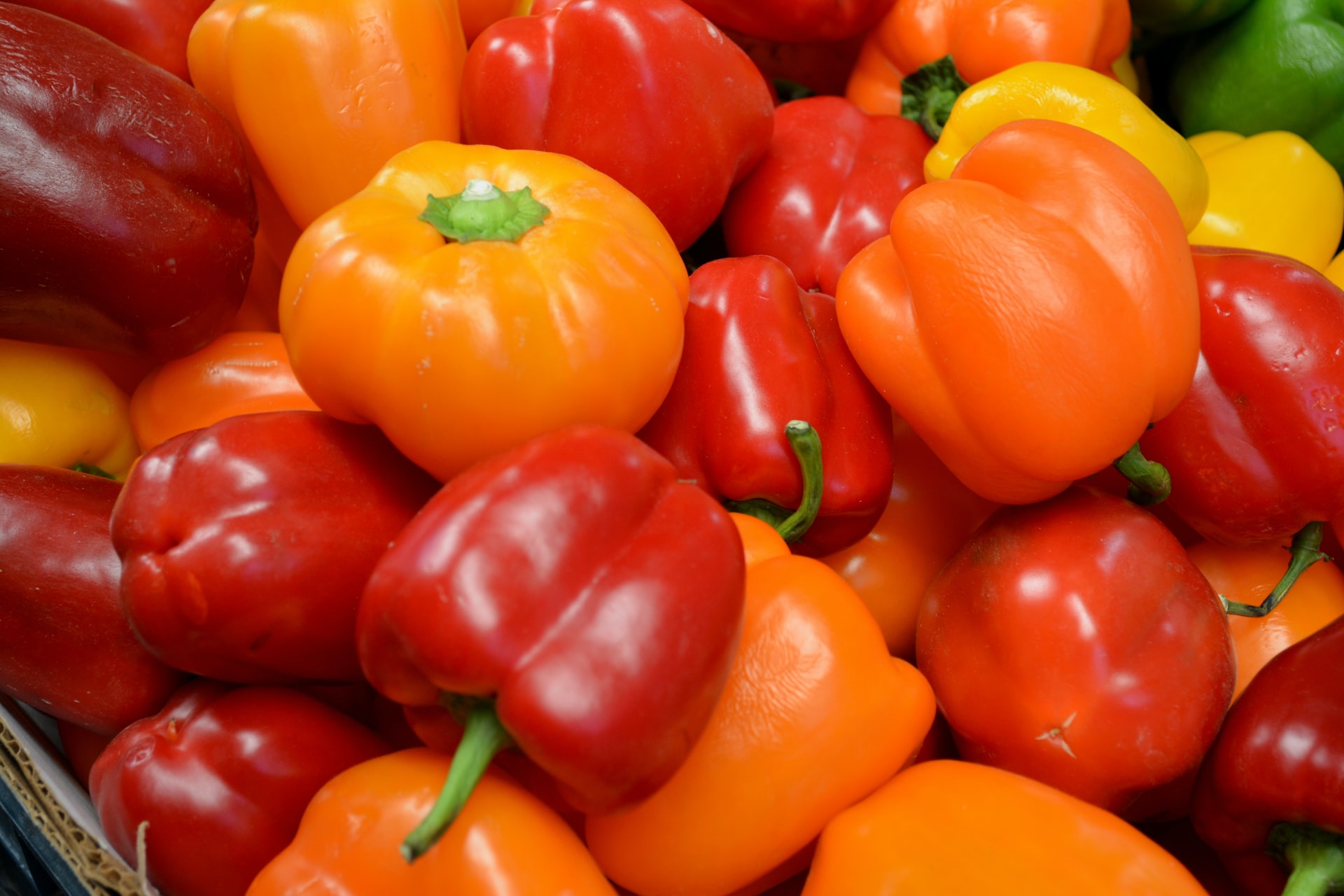
Location
The best location for growing bell pepper plants is in a spot that receives full sun, which means at least 6-8 hours of direct sunlight per day. Bell peppers also need well-draining soil that is rich in organic matter. Plant them in a location that is sheltered from strong winds, as they can be fragile and prone to damage. Additionally, bell peppers benefit from consistent watering and regular feeding with a balanced fertilizer to promote healthy growth and fruit production.
Sun light
Bell pepper plants need at least 6-8 hours of direct sunlight per day to thrive. They prefer full sun, so the more sunlight they receive, the better they will grow and produce fruit. However, they can tolerate some shade, especially in hot climates, but their growth and fruit production may be reduced.
Soil
Bell pepper plants prefer well-draining, loamy soil that is rich in organic matter. A soil pH between 6.0 and 6.8 is ideal for bell peppers. Amending the soil with compost or well-rotted manure can help improve soil structure and fertility. Avoid heavy clay soils, as they can lead to poor drainage and waterlogging, which can be detrimental to bell pepper plants.
Hydration
Bell pepper plants need regular watering to keep the soil consistently moist but not waterlogged. Water deeply, allowing the soil to dry out slightly between waterings. In general, peppers require about 1-2 inches of water per week, but this can vary depending on the climate, soil, and stage of growth. It's best to water at the base of the plant to avoid wetting the foliage, which can lead to disease. Adjust your watering schedule based on the weather and the moisture level of the soil.
Nourishment
Bell pepper plants require several key nutrients for healthy growth and fruit production:
1. *Nitrogen (N)*: Nitrogen is important for leafy growth and overall plant vigor.
2. *Phosphorus (P)*: Phosphorus is essential for root development, flowering, and fruiting.
3. *Potassium (K)*: Potassium is important for overall plant health, stress tolerance, and fruit quality.
Issues
1. *Pests*: Common pests that affect bell pepper plants include aphids, spider mites, thrips, and flea beetles. These pests can damage the leaves, flowers, and fruit of the plant.
2. *Diseases*: Bell pepper plants are susceptible to various diseases, including bacterial spot, powdery mildew, and verticillium wilt. These diseases can cause leaf spots, wilting, and fruit rot.
3. *Blossom End Rot*: Blossom end rot is a physiological disorder caused by a calcium deficiency or uneven watering. It appears as a dark, sunken area on the bottom of the fruit and can lead to fruit loss.
What Are The Benefits Of The Bell Pepper
1. *Nutritious Harvest*: Bell peppers are rich in vitamins A and C, as well as antioxidants. Growing your own ensures you have access to fresh, nutritious produce.
2. *Cost Savings*: Growing bell peppers at home can be more cost-effective than buying them from the store, especially if you harvest a large crop.
3. *Flavor and Variety*: Homegrown bell peppers often have a fresher and more flavorful taste compared to store-bought ones. Plus, you can choose from a variety of colors and types to suit your taste.
4. *Gardening Experience*: Growing bell peppers can be a rewarding gardening experience, whether you're a beginner or an experienced gardener. It's a relatively easy plant to grow and can be grown in containers or in the ground.
5. *Control Over Pesticides*: When you grow your own bell peppers, you have control over the use of pesticides and can opt for organic growing methods if desired.
6. *Decorative Value*: Bell pepper plants can be visually appealing with their colorful fruits and lush foliage, adding beauty to your garden or indoor space.
FAQ's About Growing Bell Pepper
1. How long does it take for bell peppers to grow?
Bell peppers typically take 60-90 days to reach maturity, depending on the variety and growing conditions.
2. Do bell pepper plants need support?
While not required, some gardeners choose to support bell pepper plants with stakes or cages to help support the weight of the fruit.
3. How do you know when bell peppers are ready to harvest?
Bell peppers are ready to harvest when they reach their mature size and color. For green peppers, this is usually when they are full-sized but still green. For colored peppers, wait until they have fully changed color.
4. How do you store bell peppers after harvesting?
Bell peppers can be stored in the refrigerator for up to two weeks. To extend their shelf life, you can also freeze or pickle them.
5. How often should bell pepper plants be fertilized?
Bell pepper plants benefit from regular fertilization throughout the growing season. Use a balanced fertilizer and follow the manufacturer's instructions.
